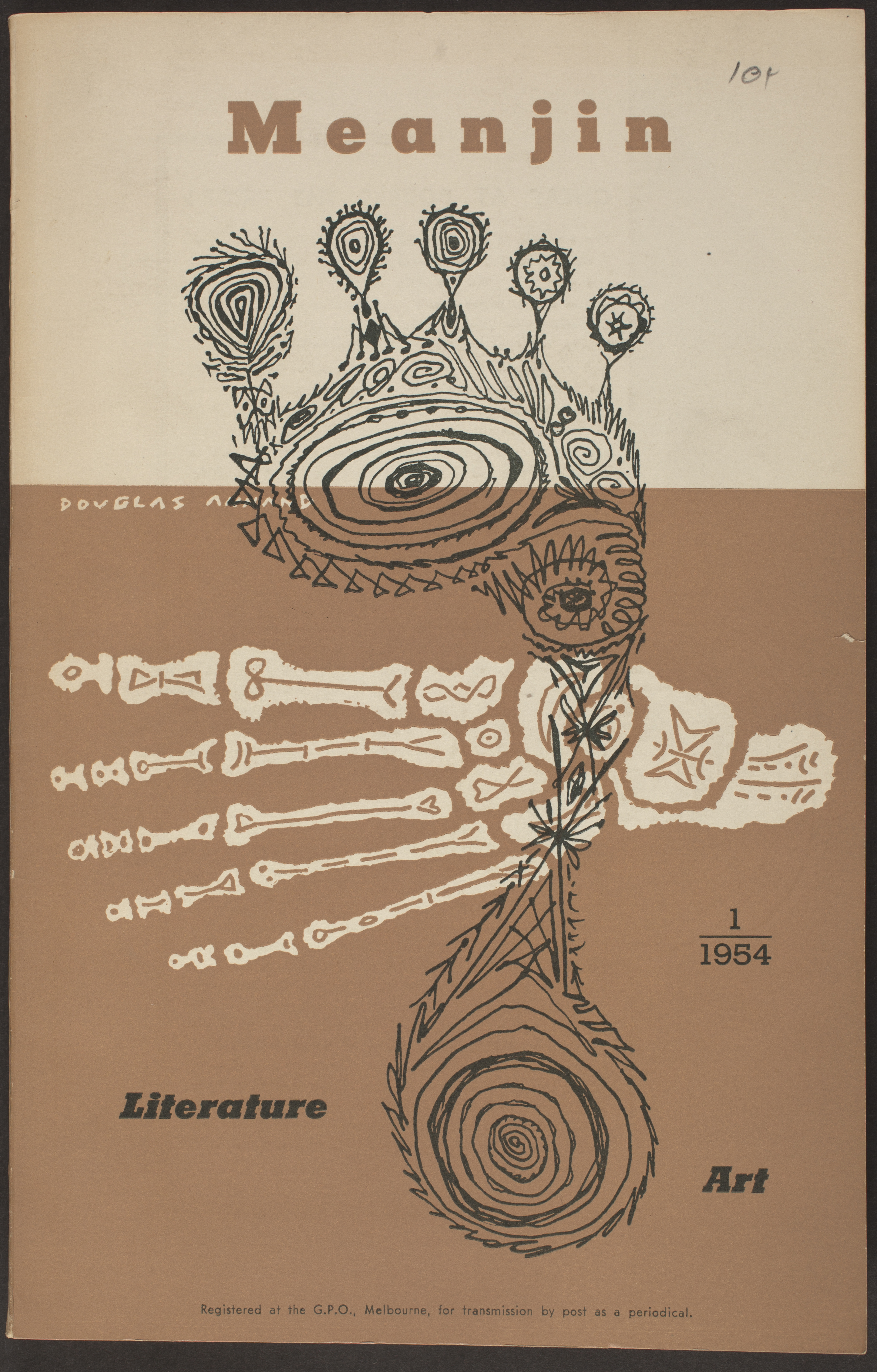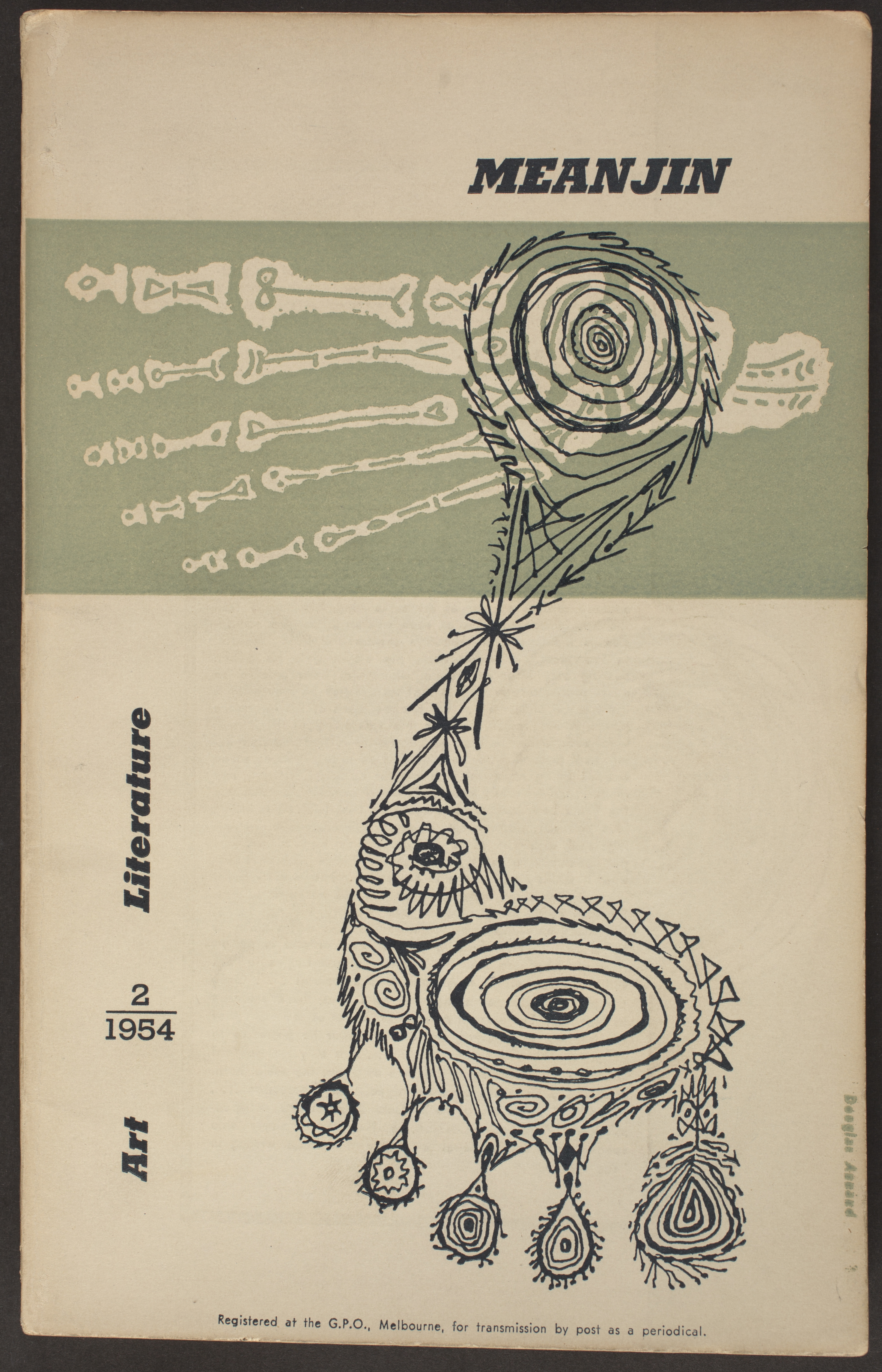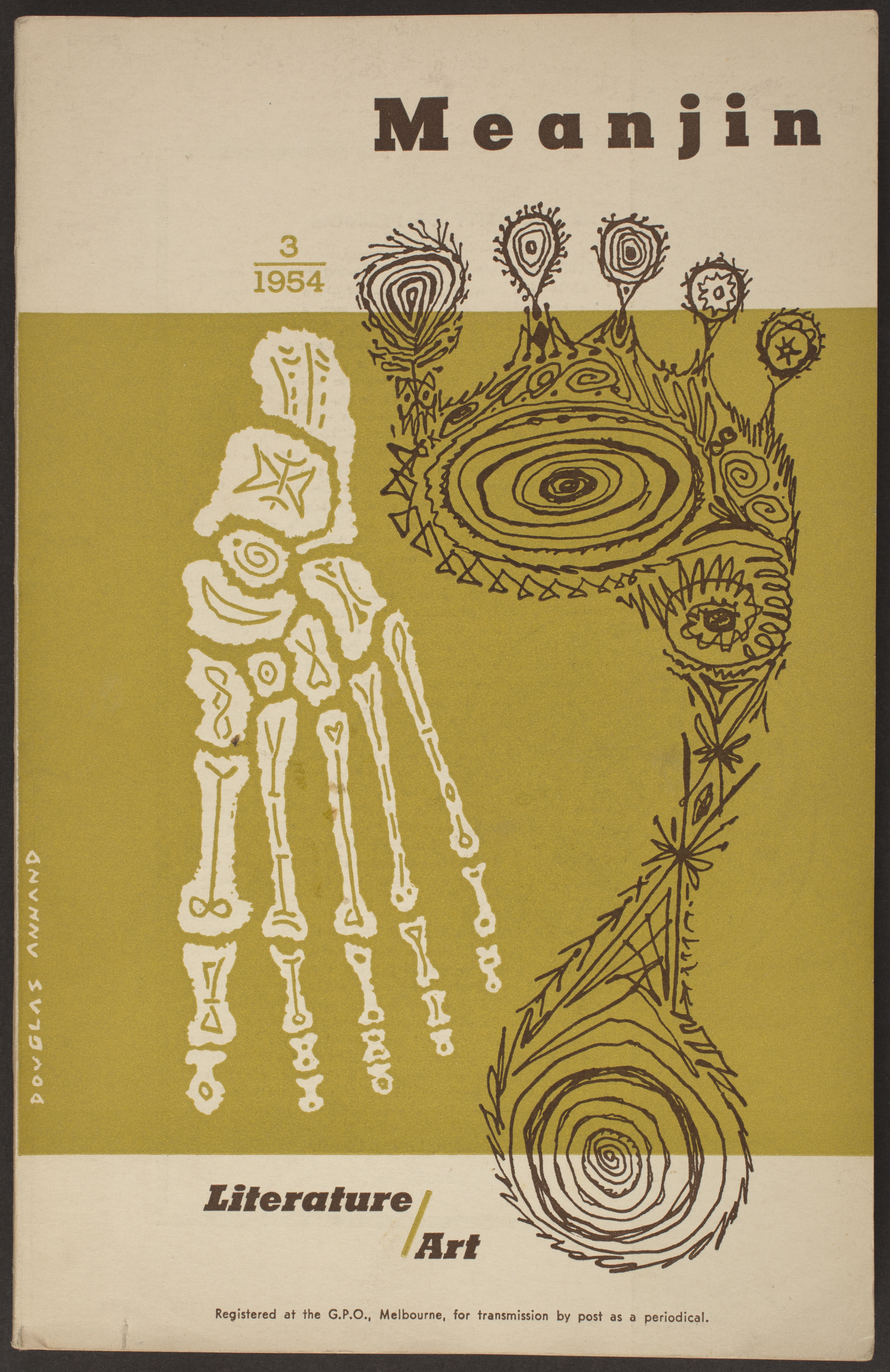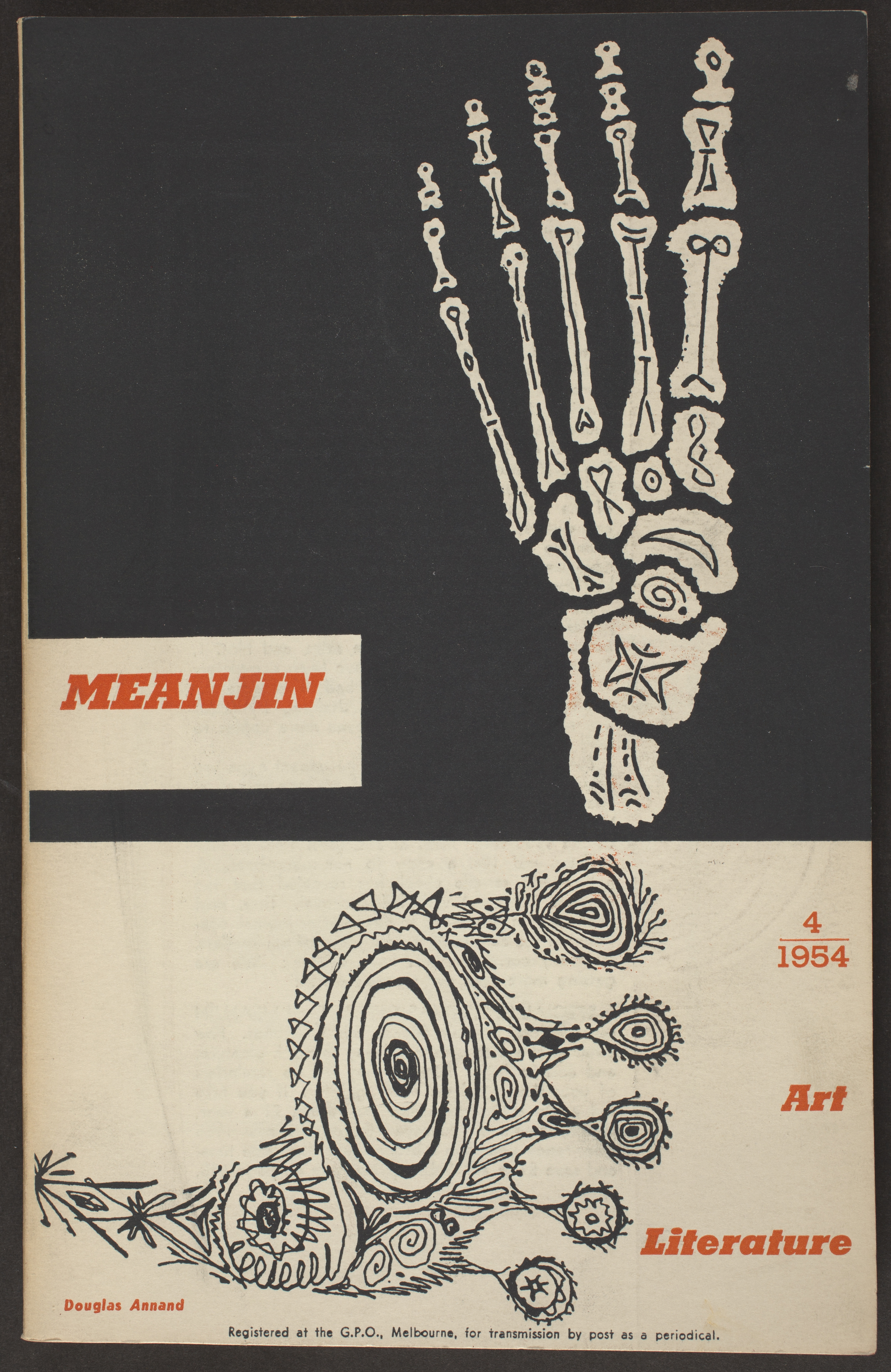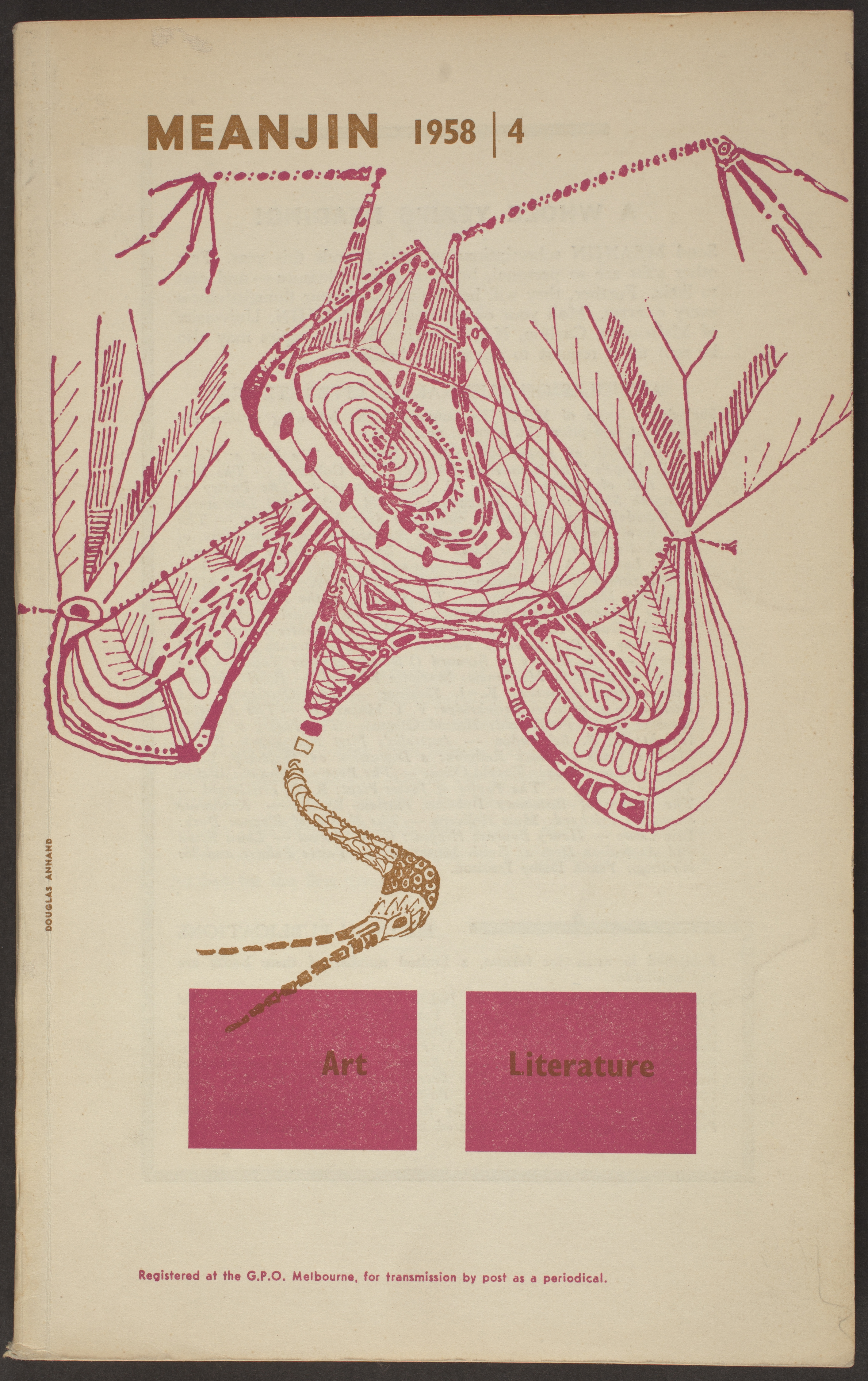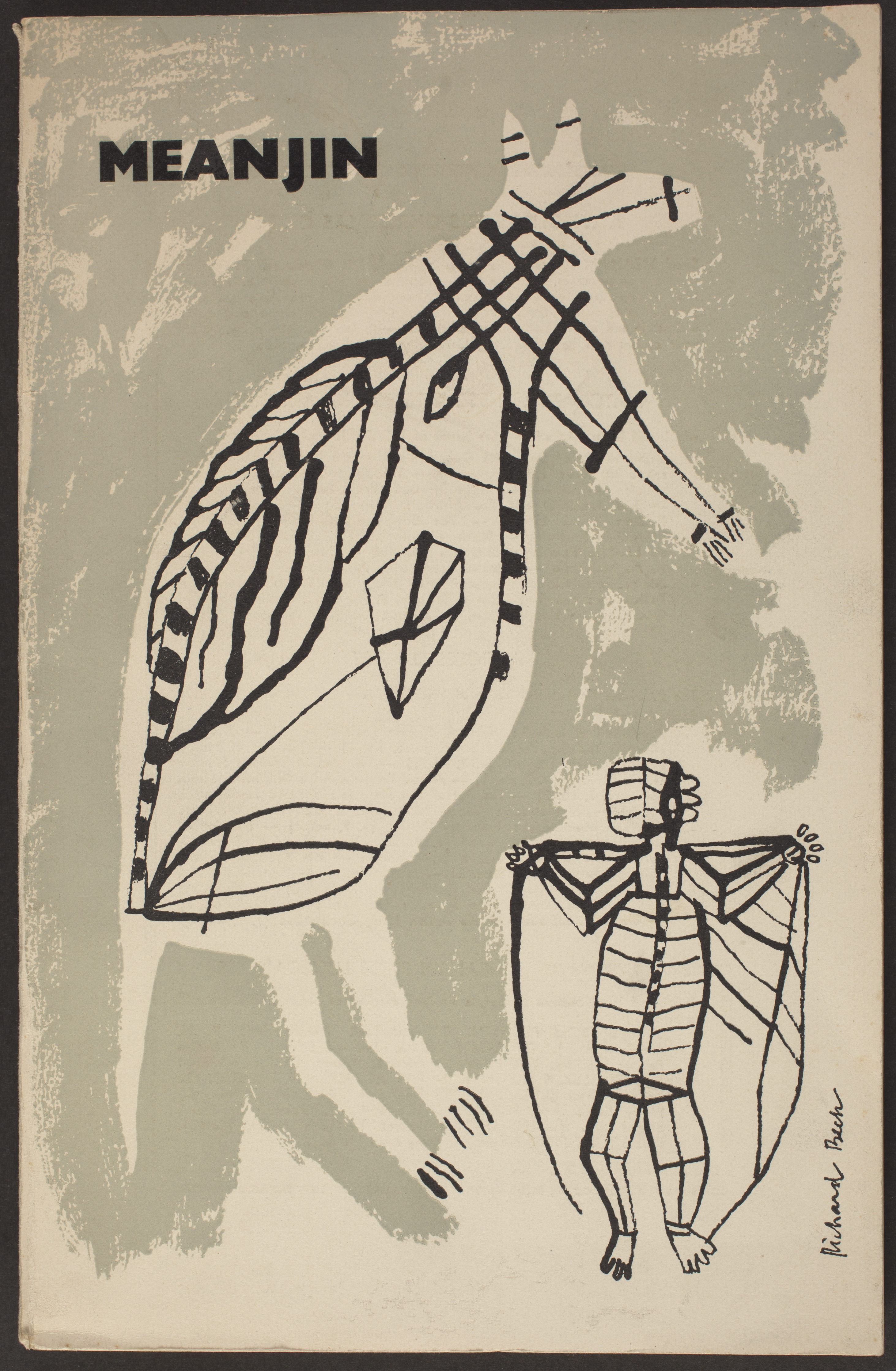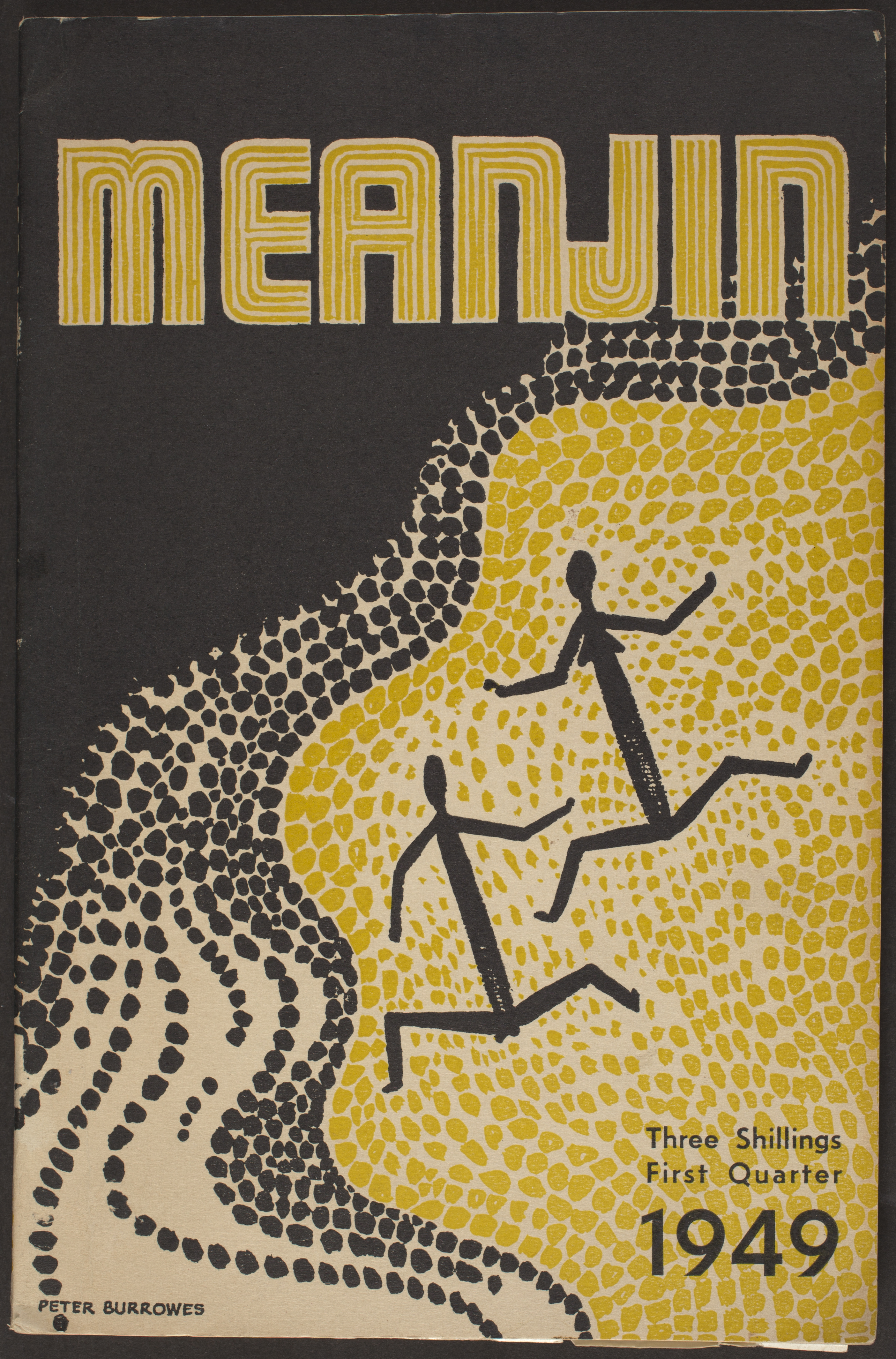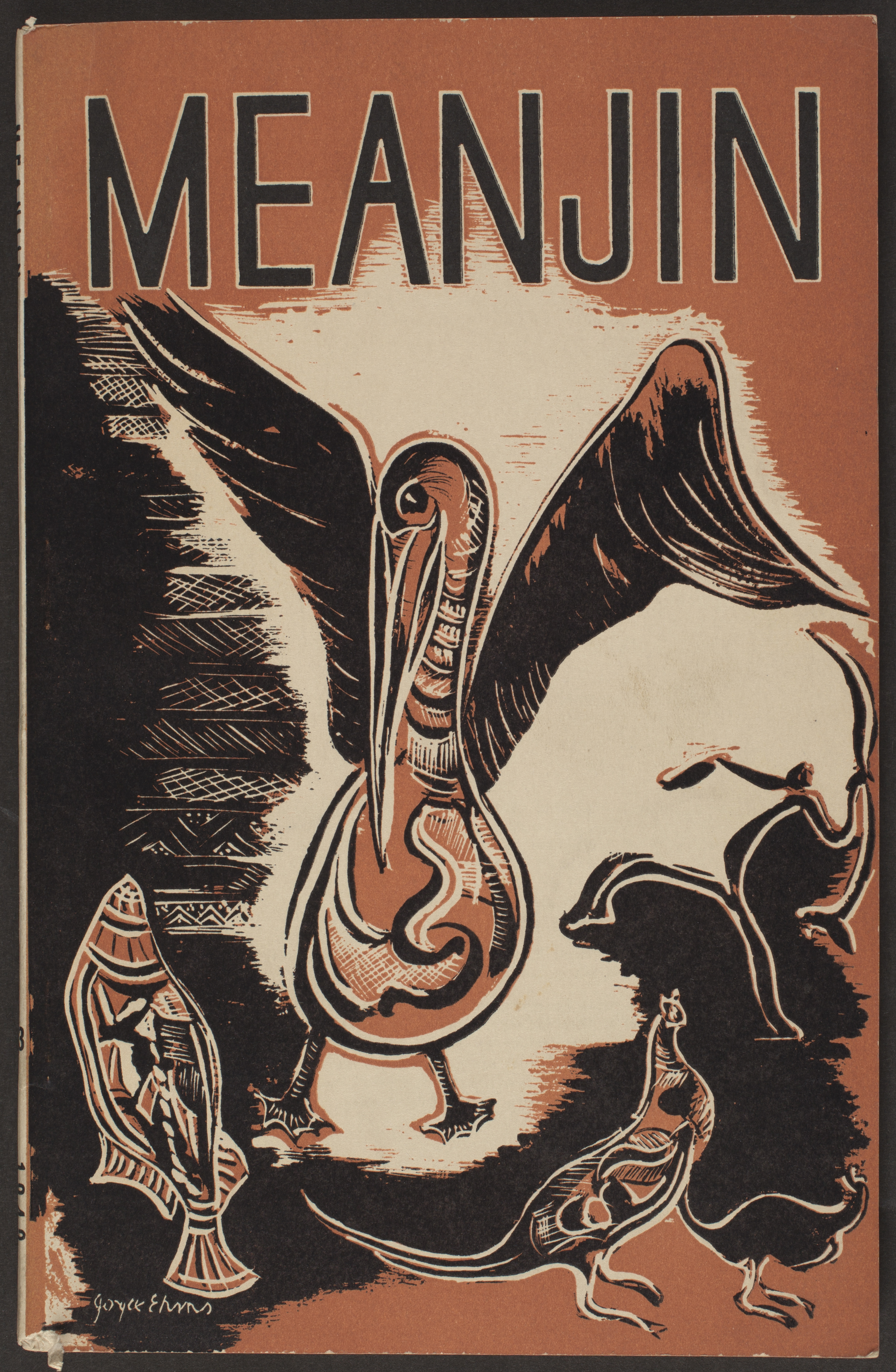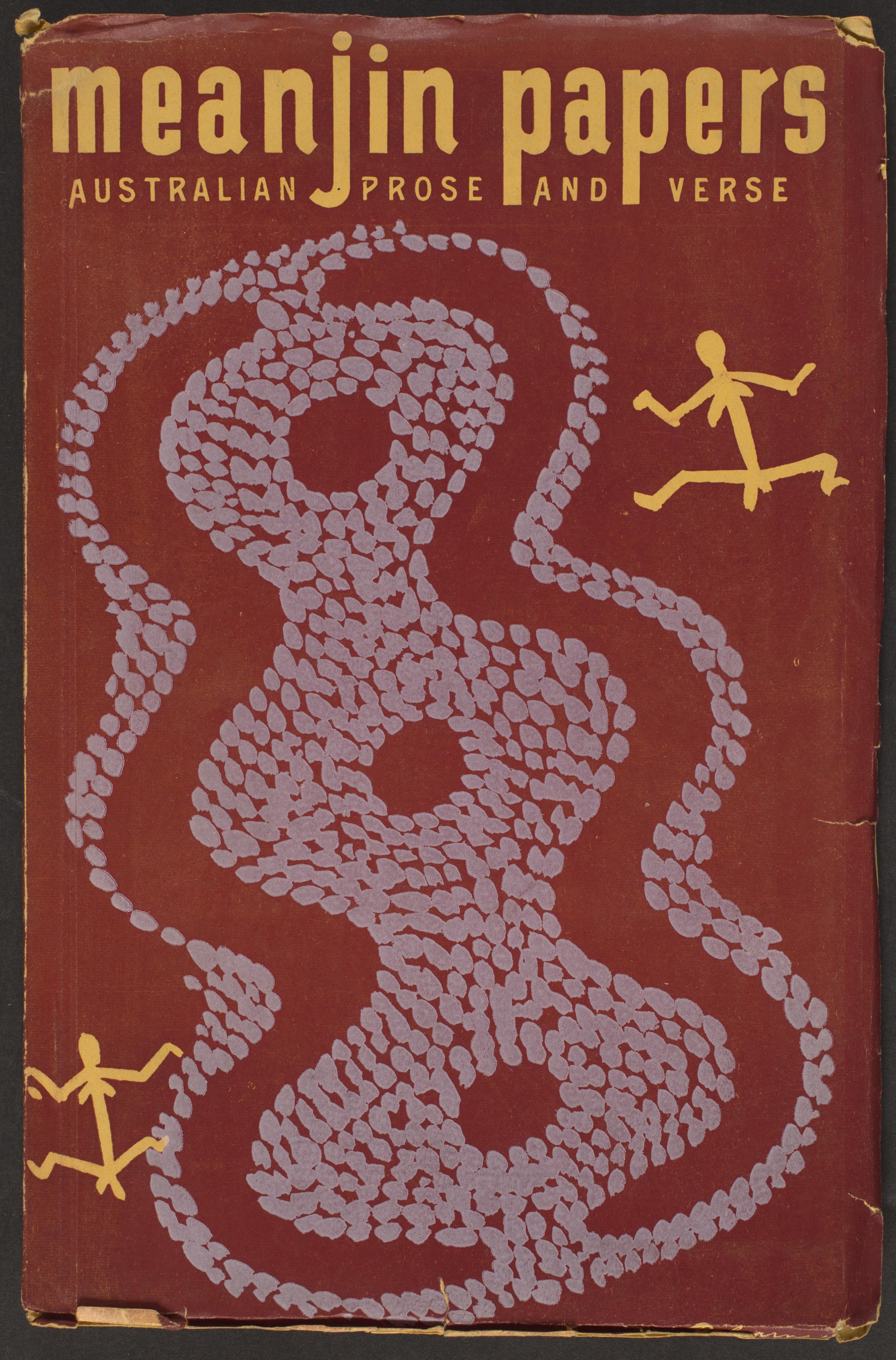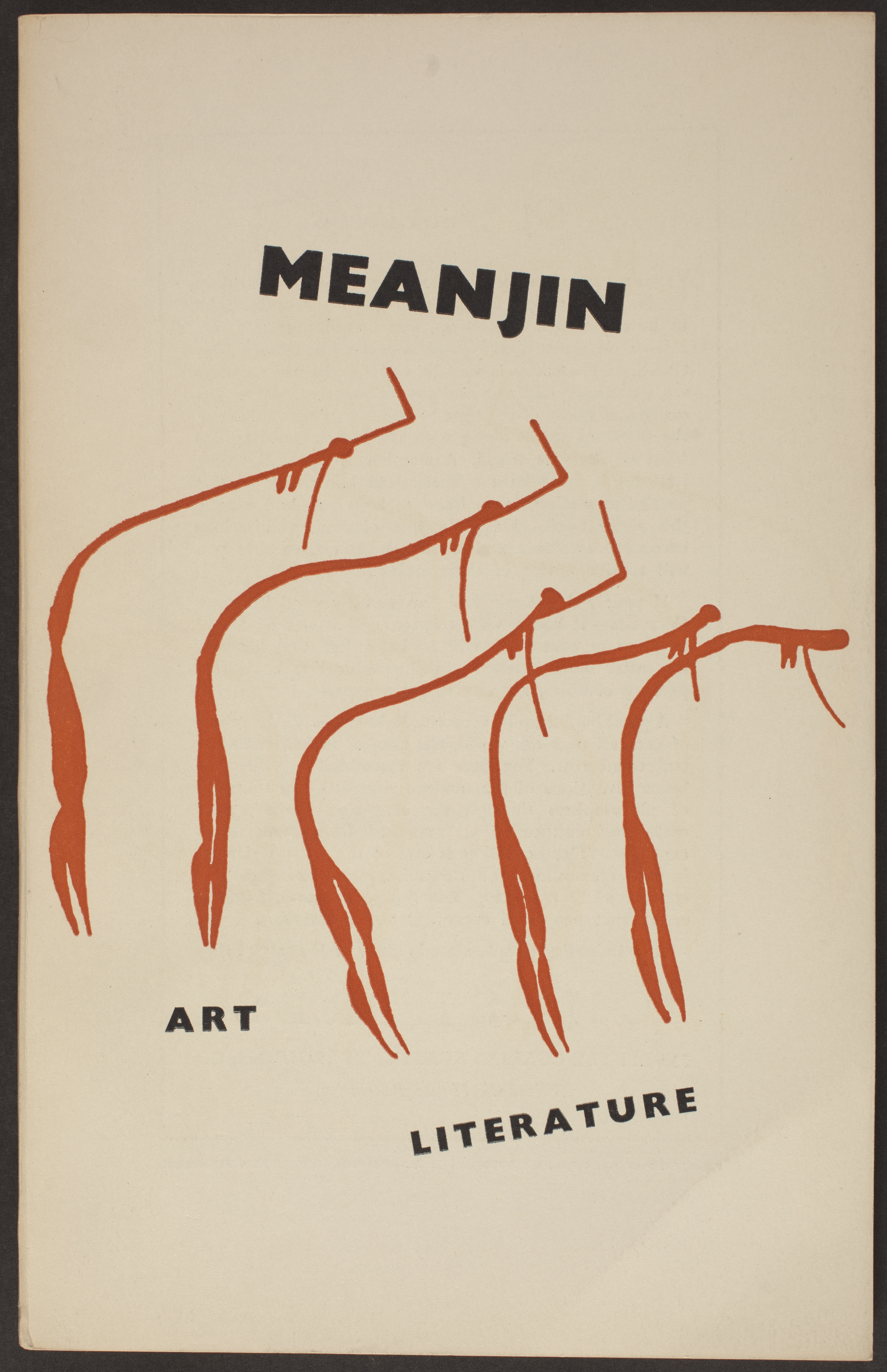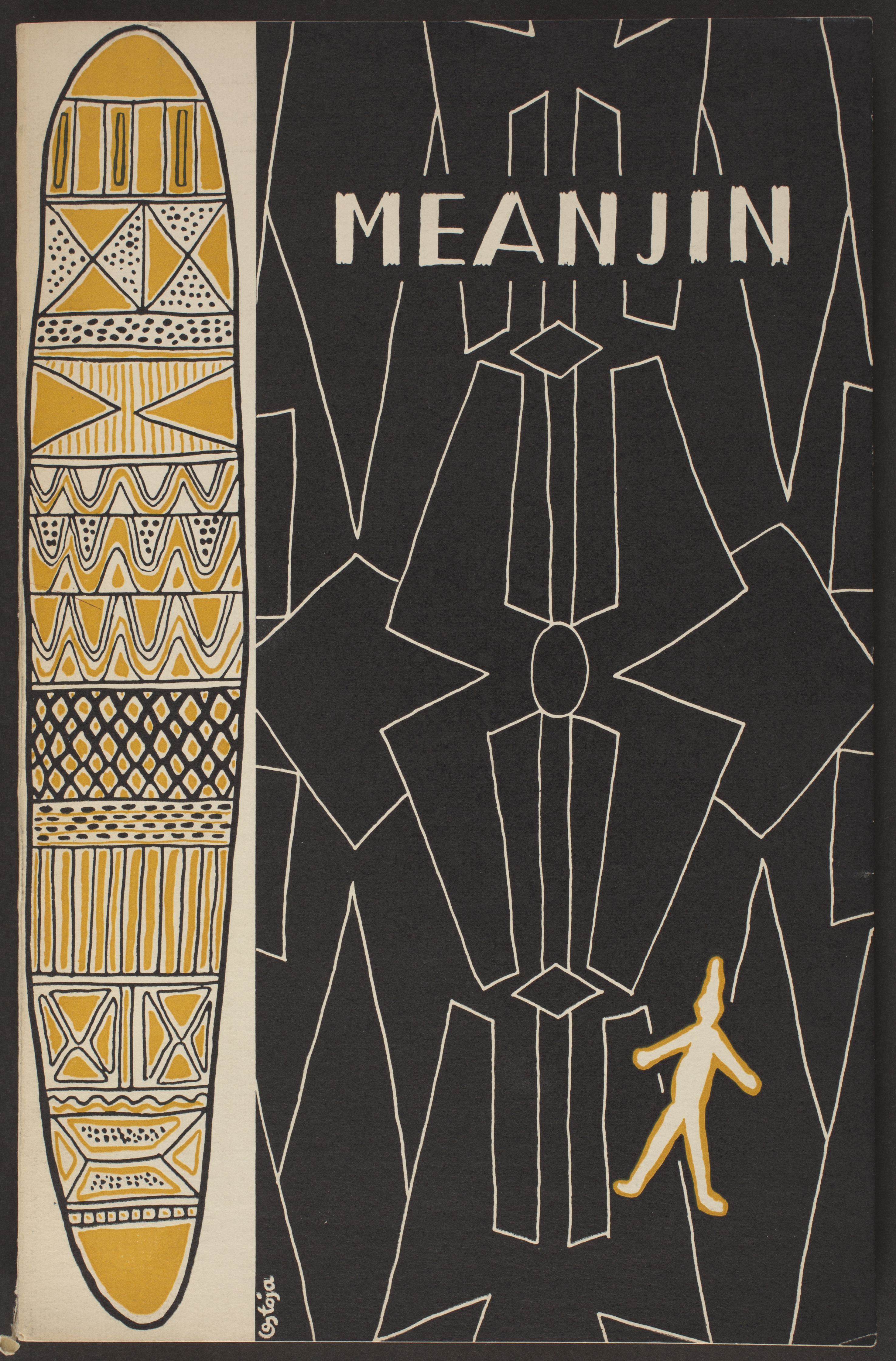The imagery used in these covers, created by a non-Aboriginal artist, utilises elements of traditional Aboriginal design - as did many of the cover designs for Meanjin during the late 1940s and 50s. These were often adapted from anthropological and ethnographic studies rather than first-hand experience of Aboriginal peoples and their cultures. Daniel Huppatz (Assoc. Prof., Architectural and Industrial Design, Swinburne University) has written that at the time of its production, ‘Aboriginal art and culture were understood as a repertoire of materials available to found a national culture’ (RDA Journal, 2018, Vol 8, No. 2, p.37).
Though it was published decades before copyright laws covered First Nations materials, and represented then progressive intentions towards a culture that had been habitually and deliberately disenfranchised by governmental policy, today we must understand that this fundamentally amounts to an act of theft. Using a Western framework to celebrate the value of Indigenous cultures ultimately devalues them, and despite the historical context and the positive goals underlying their publication, we acknowledge the problematic nature of such appropriation.
Read full article by Daniel Huppatz
